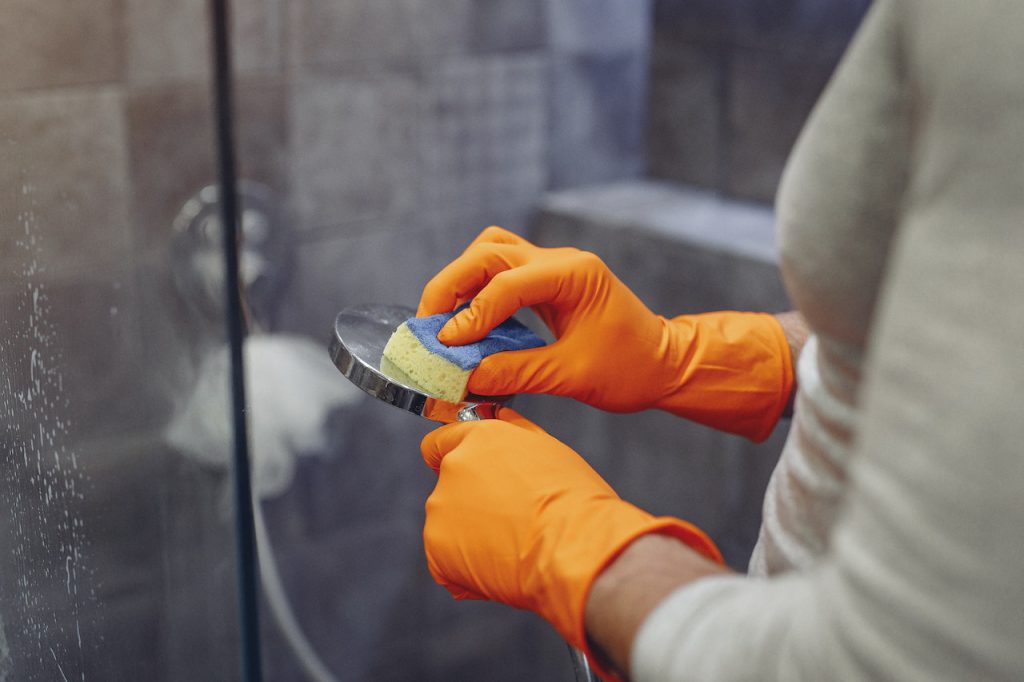Mold, a stealthy infiltrator frequently encountered in homes, possesses the capability to quietly unleash substantial health risks if neglected. It is crucial to promptly identify and address mold problems to maintain a wholesome living environment. The covert expansion of mold typically goes undetected, emphasizing the need for homeowners to stay watchful concerning its hidden threats. Recognizing and swiftly resolving mold issues becomes paramount to safeguarding the health and well-being of residents, underlining the significance of proactive measures to ensure a living space free from the potential perils associated with uncontrolled mold growth.
Mold exposure can result in an array of health complications, ranging from respiratory issues and allergies to more serious infections. The microscopic spores released by mold possess the ability to trigger asthma attacks, exacerbate pre-existing respiratory conditions, and compromise the overall well-being of individuals. Prolonged mold exposure can manifest in symptoms such as persistent fatigue, recurrent headaches, and skin irritation, underscoring the multifaceted threat it poses.
To empower individuals in safeguarding their homes against this hidden peril, practical tips for identifying and effectively addressing mold-related concerns will be provided. By fostering awareness and understanding of the signs of mold growth, homeowners can take proactive measures to mitigate its impact and protect their health. This proactive approach is crucial, as mold tends to thrive in damp and concealed areas, making it challenging to detect in its early stages.
Taking on this silent threat emphasizes how important it is for people to continue being aware and unwavering in their commitment to mold avoidance. Being vigilant allows people to fortify their homes and protect against the health hazards associated with mold exposure. It’s vital to prevent well-being from being jeopardized by this subtle hazard. Being informed and taking immediate action to stop the hidden spread of mold in your house becomes a necessary preventative step. Maintain awareness, be steadfast in your resolve, and take proactive measures to safeguard your health against the minor but potentially dangerous effects of mold invasion.
Table of Contents
ToggleIdentifying Health Risks Associated with Mold
Mold isn’t merely an aesthetic inconvenience in your living space; it can also pose substantial health risks. A comprehensive understanding of these risks is vital for safeguarding your well-being and your family. Let’s explore various mold types and their associated health effects, along with the symptoms indicative of mold exposure.
Various Mold Varieties and Their Health Effects
Various molds exert distinct health effects on individuals. Notably, Aspergillus and Stachybotrys, encountered frequently, are recognized for their potential harm to human health.
Aspergillus: This mold thrives both indoors and outdoors, especially in damp conditions. It emits allergens capable of triggering respiratory symptoms such as coughing, sneezing, and nasal congestion. Individuals with allergies or asthma may experience heightened symptoms when exposed to Aspergillus.
Stachybotrys:
Commonly known as black mold, Stachybotrys releases mycotoxins linked to severe health issues. Prolonged exposure to these mycotoxins has been associated with respiratory problems, including chronic coughing, wheezing, and, in extreme cases, lung bleeding.
It’s crucial to note that these are just a few examples of molds commonly found in homes, each potentially carrying its own set of health effects.
Signs of Mold Exposure in Humans
Mold exposure can manifest in a range of symptoms, varying based on individual sensitivity, duration, and intensity of exposure.
- Nasal Congestion: Individuals exposed to mold may experience nasal congestion or stuffiness as the nasal passages react to mold spores through allergic inflammation.
- Throat Irritation: Inhaled mold spores can irritate the throat, causing discomfort and a persistent cough.
- Skin Rashes: Some individuals may develop itchy skin rashes or hives due to mold exposure, appearing as red, raised bumps on the skin.
- Aggravated Asthma or Allergies: For those with pre-existing asthma or allergies, mold exposure can exacerbate symptoms, triggering asthma attacks, inducing wheezing, and making breathing more challenging.
- Chronic Respiratory Issues: Prolonged exposure to mold spores is associated with the development of chronic respiratory conditions, including bronchitis and recurring sinus infections.
Vigilance is essential. If you suspect mold exposure in your home, pay attention to these symptoms and seek medical advice promptly. Early detection and mitigation can prevent further health complications.
Safety comes first
Regularly inspect your home for signs of moisture or water damage to identify potential mold growth areas. Proper ventilation and humidity control are critical in preventing mold proliferation.
In the event of mold discovery, consulting professionals specializing in mold remediation is recommended. They possess the expertise and equipment necessary to safely remove mold and restore a healthy living environment.
Spotting Mold Presence in Your Living Space
Recognizing Observable Indicators of Mold Presence
It’s crucial to identify visible cues indicating the presence of mold in your home. Be vigilant for black or green patches on walls, ceilings, or other surfaces, as these often signify mold growth and should not be overlooked. If you detect a musty odor in specific areas of your home, it may be a signal of concealed mold behind walls or beneath flooring. Never underestimate the potency of your sense of smell! Additionally, be aware that peeling wallpaper or paint can expose underlying mold infestations that demand immediate attention.
Here are key takeaways regarding visible signs of mold growth:
- Black or green patches on walls, ceilings, or surfaces frequently indicate mold growth.
- Musty odors in specific areas might suggest hidden mold behind walls and flooring.
- Peeling wallpaper or paint can unveil underlying mold infestations.
Concealed Nooks Where Mold Flourishes
Mold is a surreptitious intruder, thriving in various hidden spaces within your home. Familiarizing yourself with these areas is vital for effectively addressing and preventing mold issues. Bathrooms, basements, and kitchens are common locations where moisture accumulation fosters mold growth. The humid conditions generated by steamy showers or cooking activities create an optimal breeding environment for mold spores to propagate swiftly.
Consider these key insights into hidden areas where mold can flourish:
- Bathrooms: High humidity levels and inadequate ventilation make bathrooms prone to mold growth. Be watchful for signs of moisture around sinks, tubs, showers, toilets, and windowsills.
- Basements: Owing to their subterranean position and limited exposure to natural light, basements often have elevated humidity levels. Inspect corners and walls for indications of water damage or discoloration, indicative of potential mold presence.
- Kitchens: The consistent use of water and steam in the kitchen establishes an ideal habitat for mold to thrive. Examine areas under sinks, around dishwashers, and behind appliances for any indications of mold growth.
Apart from these typical areas, it’s important to understand that leaks or inadequate ventilation can also cause mold to grow in hidden spots. The perfect environment is provided by leaky roofs or pipes for the growth of hidden mold colonies. You must take immediate action to stop the spread of mold if you see indications of water damage or suspect leaks.
Unexpectedly, if mold growth is not removed, it can hide in your air ducts and HVAC system, dispersing airborne mold spores throughout your house. To stop mold spores from spreading, your HVAC system needs to be cleaned and maintained regularly.
Health Risks Linked to Mold Exposure
Impact of Mold Spores on Respiratory Health
Mold is not merely an unsightly inconvenience capable of damaging your walls or furniture; it can also pose significant health hazards, particularly with prolonged exposure. Among the primary health concerns associated with mold is its impact on respiratory well-being.
Inhaling airborne mold spores can result in a variety of respiratory issues, including coughing and wheezing. These minuscule spores have the potential to irritate the airways, prompting symptoms reminiscent of those encountered during a cold or allergic reaction. For individuals with pre-existing respiratory conditions such as asthma or chronic obstructive pulmonary disease (COPD), mold exposure can exacerbate their symptoms.
Extended exposure to elevated levels of specific molds may heighten the likelihood of developing asthma in individuals previously unaffected. This implies that continuous exposure to mold within your living environment could increase the risk of developing this persistent respiratory condition.
Allergic Responses to Mold
Beyond respiratory problems, mold can elicit allergic reactions in susceptible individuals. Allergies manifest when the immune system overreacts to ordinarily harmless substances like pollen or pet dander. Mold spore exposure can trigger allergic responses, leading to symptoms like nasal congestion, sneezing, itchy eyes, and skin irritation. These manifestations closely mirror those experienced during periods of high pollen or exposure to other allergens. In more severe cases, individuals may encounter breathing difficulties or develop hives.
Regular exposure to mold allergens can also contribute to chronic allergic rhinitis—a persistent inflammation of the nasal passages resulting from allergic reactions. This condition can cause ongoing discomfort and disrupt daily activities.
Toxic Consequences of Select Mold Varieties
The health implications associated with certain molds, particularly black mold (Stachybotrys chartarum), extend to more serious concerns. Black mold produces mycotoxins, toxic substances that can harm humans. Prolonged exposure to these mycotoxins can lead to various health issues.
Extended exposure to mycotoxins from specific molds may manifest as neurological symptoms, including headaches, difficulty concentrating, memory problems, and dizziness. In severe instances, toxic mold exposure has been linked to respiratory bleeding and organ damage.
While black mold is often emphasized for its toxicity, it’s essential to recognize that other mold types can also produce mycotoxins, posing health risks. Addressing any mold problem promptly and taking necessary precautions is crucial, irrespective of the specific mold type present in your home.
Mastering Mold: Your Ultimate Guide to Safeguarding Your Home Against Growth and Managing It Effectively
Effectively preventing and managing mold growth in your home requires a multifaceted approach primarily focusing us on controlling moisture levels and humidity. Additionally, proper ventilation and regular cleaning practices play pivotal roles in creating an inhospitable environment for mold spores. This comprehensive guide provides detailed insights and actionable tips to safeguard your home from the detrimental effects of mold.
Controlling Moisture Levels and Humidity
- Promptly Address Leaks
Swiftly fixing leaks in pipes, faucets, or roofs is paramount to preventing excess moisture buildup, which serves as an optimal breeding ground for mold. Immediate attention to such issues is crucial to curbing further damage.
- Utilize Dehumidifiers
Strategically placing dehumidifiers in moisture-prone areas, such as basements and bathrooms, proves effective in reducing humidity levels. These devices extract surplus moisture from the air, creating an environment where mold spores struggle to flourish and spread.
- Ensure Adequate Ventilation
Proper ventilation is instrumental in moisture control. Regularly opening windows and using fans helps maintain optimal airflow, preventing the stagnation of humid air that can foster mold growth.
Proper Ventilation to Prevent Condensation and Dampness
- Install Exhaust Fans
Installing exhaust fans in key areas like bathrooms and kitchens aids in expelling excess moisture generated during activities such as showering or cooking. This mitigates the likelihood of condensation on surfaces.
- Open Windows
Frequent opening of windows facilitates the circulation of fresh air throughout your home. This reduces humidity levels and minimizes condensation on walls and windowsills, further inhibiting mold growth.
- Consider Air Conditioning Units with Dehumidifiers
In humid climates, investing in air conditioning units with built-in dehumidifiers proves beneficial. These units cool the air and extract excess moisture, creating an environment hostile to mold spores.
Regular Cleaning and Maintenance Practices to Prevent Mold Growth
- Use Mold-Inhibiting Products
When cleaning, employ mold-inhibiting products on surfaces like tiles, shower curtains, and sinks in bathrooms. These products play a vital role in preventing the establishment and spread of mold spores.
- Vacuum Regularly
Regular vacuuming of carpets and upholstery removes potential sources of mold spores, such as dust and pet dander. Dispose of the vacuum bag outside to prevent any trapped spores from re-entering your home.
- Inspect for Water Damage
Regularly inspect your home for signs of water damage or leaks, including discolored walls or musty odors. Immediate action to address these issues is essential to minimize the risk of mold development.
By incorporating these preventive measures and consistently implementing maintenance practices, you can significantly reduce the risk of mold growth in your home. Early detection and prompt action remain pivotal, ensuring a healthy and mold-free living environment.
Conclusion: Protecting Your Health from the Dangers of Household Mold
Congratulations on successfully navigating through the sections that have illuminated the subtle yet significant threat lingering within the confines of your home – mold! Your dedication to understanding the health implications associated with mold exposure and acquiring the knowledge to recognize and thwart its growth reflects a commendable commitment to ensuring the well-being of yourself and your loved ones. Armed with this awareness, it’s now time to translate this knowledge into practical actions and cultivate a healthier living environment.
To effectively safeguard against mold-related health risks, it is imperative to proactively implement preventive measures. Initiate this process by conducting regular inspections of your living spaces, paying particular attention to areas prone to moisture accumulation. The mantra here is prevention – a strategic approach to thwarting mold growth before it takes root. Ensure optimal ventilation throughout your home, maintaining a vigilant eye on humidity levels to curb conditions conducive to mold proliferation. Should you come across any signs of mold, swift action is imperative. Employ appropriate cleaning methods to safely and effectively eradicate the mold, or seek professional assistance if the situation demands it.
Your dedication to safeguarding your health against the dangers of household mold deserves commendation. Your proactive efforts not only elevate the general quality of your living environment but also demonstrate a commitment to the well-being of those who cohabit with you. Consider this as the first stride in a continuous process of self-education concerning potential health risks in your living space. Stay abreast of recommended practices for ensuring a secure and healthy living environment. Let us unite in our pursuit to foster homes that foster optimal well-being, collectively contributing to the creation of living spaces where everyone can flourish and thrive. This commitment to ongoing awareness and action establishes a foundation for a healthier, more sustainable lifestyle that benefits both individuals and the communities they belong to.
Sources:
Discover Superior Mold Remediation with Garcia Home Restoration!
We understand the serious health risks and discomfort that mold in your home can cause. Our dedicated team of certified professionals is at the forefront of providing top-notch Mold Remediation services, ensuring your home is safe and healthy.
Garcia Home Restoration isn’t just about fixing problems; we’re about creating healthier living environments. Our reputation in Contra Costa County is built on consistent quality, unparalleled expertise, and the trust of numerous satisfied clients. Don’t compromise on your family’s health and well-being. Contact us today for exceptional Mold Remediation services and embrace a healthier, mold-free home!




